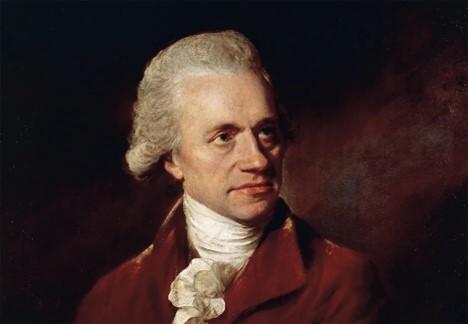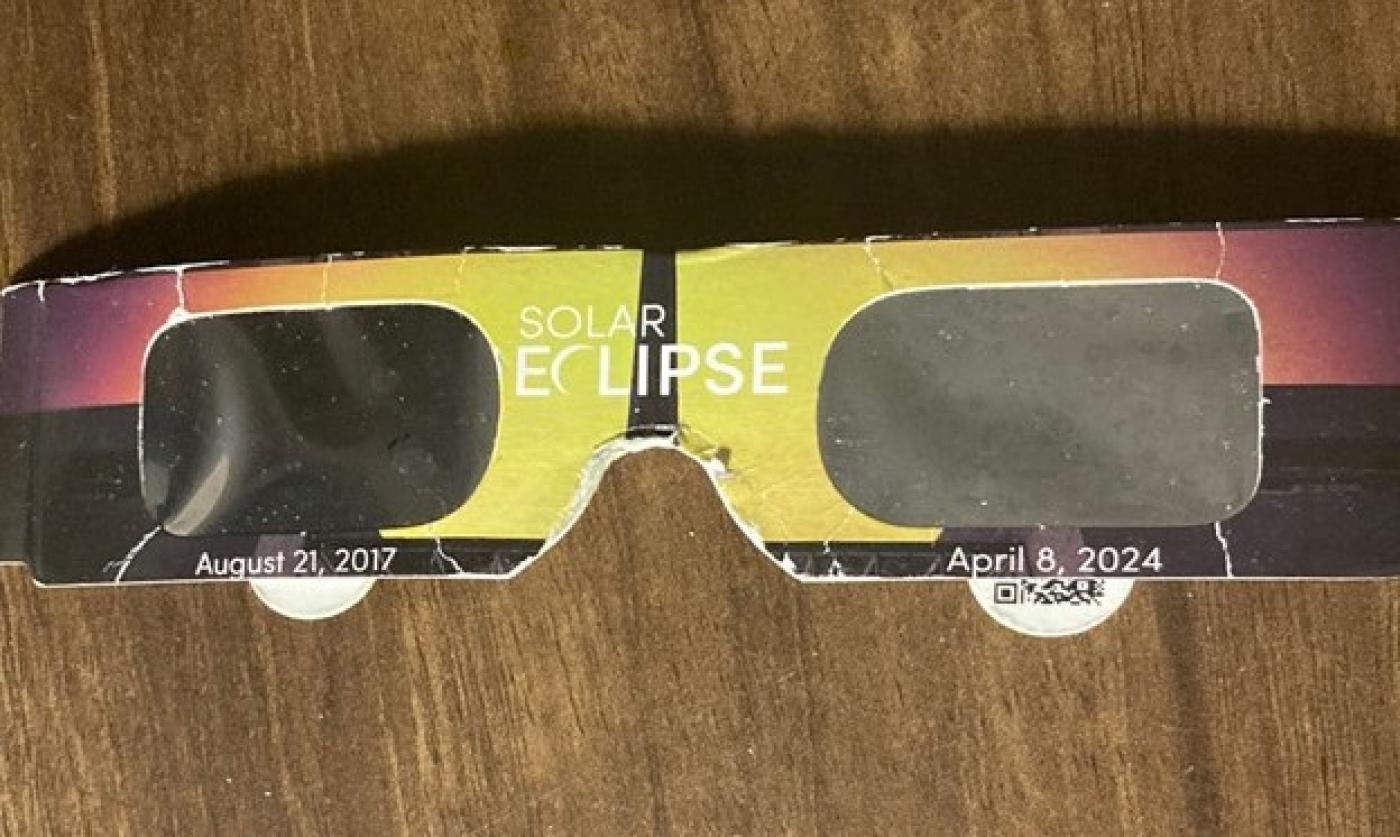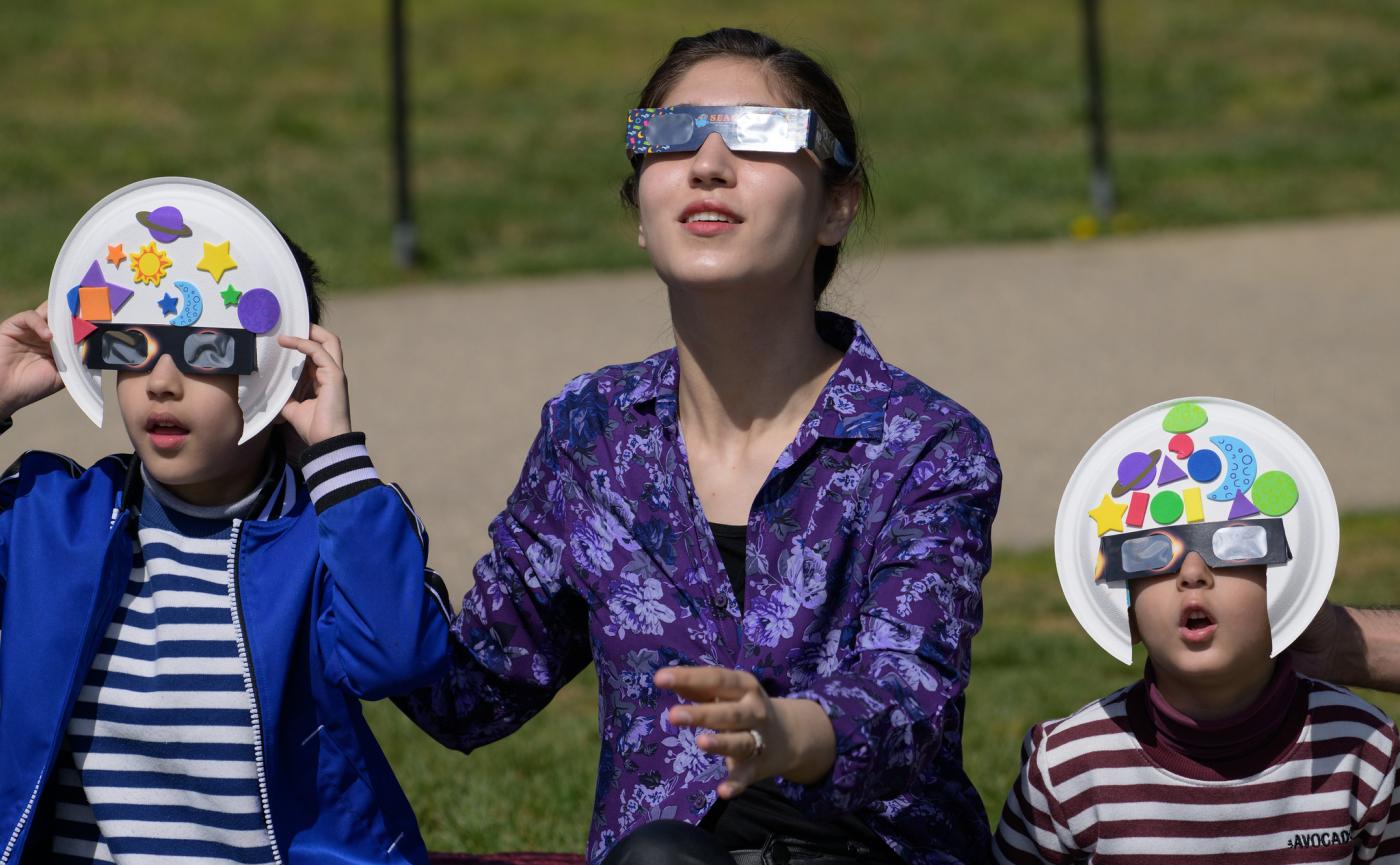It is not happenstance that the Renaissance and the Enlightenment coincided with the development of the telescope and major discoveries in the realm of astronomy; awareness of our place in the universe fired our imagination and curiosity and gave us perspective on our existential beliefs and earthly concerns. Looking at the vastness of the cosmos made our human conflicts seem petty, and inspired dreams of a peaceful world, in which we could unite as one race on our pale blue dot. (Which is precisely why authority figures of various stripes whose business it was to instill fear and demand blind obedience from the populace didn't approve of stargazing.)
One of the great astronomers of the Enlightenment was William Herschel, who actually made his living as a musician (he played violin, oboe and organ and was a prolific composer) but left his mark on history through several notable discoveries he made and phenomena he studied through a telescope he designed and built himself, including the planet Uranus, infrared radiation, and the seasons on Mars. In 1792 he invited Joseph Haydn, who like Herschel was a native German speaker who found himself in England, to visit his observatory in Slough. Looking through the telescope had a profound effect on Haydn, who in the wake of his visit developed an "astral" musical style evocative of the mysteries of the night sky. You can hear this in several of his late works, the most famous example being the "Representation of Chaos" that begins his oratorio The Creation, but to my ears the best example of this style is the intermezzo for twelve winds that he added to the oratorio version of Seven Last Words of Christ.
Someone very familiar with both works was Ludwig van Beethoven; you can hear Beethoven's attempts to mimic this style in several works. His ballet The Creatures of Prometheus and oratorio Christ on the Mount of Olives were written when he was in his early thirties and was consciously trying to beat Haydn at his own game. While both works played an important role in Beethoven's development and deserve to be better known, Haydn's "astral" affect was something that Beethoven had to grow into. We can hear hints of it in the slow movements of some of his string quartets and piano sonatas, a hypnotic quality in which time seems to be suspended, and the space between notes, like the space between stars, seems to contain multitudes we can't fully perceive. Eventually Beethoven transformed Haydn's outer space music into a hallmark of his own late style. We hear this throughout the Ninth Symphony - from the beginning, which could be considered Beethoven's own "representation of chaos", to his musical depiction of a canopy of stars in his setting of Schiller's lines "Brüder, über'm Sternenzelt Muß ein lieber Vater wohnen" in the finale.
Here’s a playlist of the Haydn pieces I referenced and some Beethoven in his astral style: the slow movement of the String Quartet in e minor, the last two connected movements of the Piano sonata in A flat, and the Sanctus from Missa Solemnis. The final selection is the Cavatina from the String Quartet op. 130, in the same Budapest Quartet performance that is also the final selection on the Golden Record that is at this moment traveling on the Voyager through interstellar space
That particular moment in the symphony played in my mind as I watched the solar eclipse in Cleveland last month. The trip felt spontaneous and it almost didn’t happen, but in retrospect I had been preparing for it all my life.
My first solar eclipse was Saturday, March 7, 1970. I was eight years old, living in Los Angeles, with a broken collarbone I sustained in a car accident that occurred two weeks earlier; my injury was minor compared to what happened to the rest of my family (especially my mother who sustained permanent brain damage), and in fact isn’t the worst thing that can happen to a kid, when that particular bone is fairly malleable and heals well. I wore an ace bandage for six weeks. But it still hurt, a lot, and it was a very traumatic time, so it was good to be reminded that the universe was much bigger than my situation.
The eclipse turned out to be the first thing that happened in my life after the accident that wasn’t somehow about the accident, which is perhaps why it has special meaning for me. It was only partial where we were but still noteworthy. I wandered outside that morning with two of my siblings (I am the youngest of five) and marveled at the strange shadows of the leaves on the ground and the hundreds of mini-eclipses reflected on various surfaces. My sister made one of those cardboard pinhole things and we saw the small image of the obstructed sun. Then we went back inside and turned on the television to CBS, which had pre-empted their Saturday morning cartoons to cover the eclipse. I was fascinated. At the end of the broadcast they played “Here Comes the Sun” over the final credits. It had been released only five months earlier but it already felt like a classic folk song even to my 8-year-old self. I remember at the time thinking that was a brilliant use of that song, the seeds of my radio DJ instincts already apparent.
My second solar eclipse was on August 21, 2017. I was at the Washington Zoo (i.e. the Smithsonian National Zoological Park) where they held a public viewing. This one was also partial and had the same eerie shadows and refractions I remembered from my first one. (The only thing it’s comparable to in terms of its impact on light - while being totally different - is being downwind from a major wildfire.) It was fun to see it in the zoo, though I now regret I was too focused on the shadows and the people I was with to notice the impact it was having on the animals. The major takeaway I had from that eclipse was the pair of eclipse glasses I was given at the zoo, which had the date “August 21, 2017” printed under the right eye lens and “April 8, 2024” printed under the left eye lens. For nearly seven years these glasses had been sitting on my coffee table as a reminder of a promise I made to myself as I stood in the mysterious light of the 2017 eclipse: in 2024, no matter where I was in my life, I was going to go experience totality.
I was not at all certain I was going to go, even after I made all the arrangements, all the way up to the day before the eclipse. The pandemic turned me into a bit of a kind of asocial gnome; I relate a bit too much to Beethoven when he wrote these words:
“Though born with a fiery, active temperament, even susceptible to the diversions of society, I was soon compelled to withdraw myself, to live life alone…therefore forgive me when you see me draw back when I would have gladly mingled with you. My misfortune is doubly painful to me because I am bound to be misunderstood; for me there can be no relaxation with my fellow-men, no refined conversations, no mutual exchange of ideas. . . I must live almost alone like an exile.”
- from Beethoven’s Heiligistadt Testament, 1803
There were also more prosaic concerns. Cleveland’s weather forecast was ambiguous, with a mix of sun, clouds and rain that seemed to change every hour. I could go all the way there just to witness a cloudy day in Ohio.
But in the end I went, leaving DC at 4 pm on Sunday and arriving in Cleveland just before 3 am on that now-immortal Monday. I figured that would be prudent. My destination was the Great Lakes Science Center just a few blocks from the train station, where NASA was sponsoring a major viewing event free to the public. While the gates didn’t open until 10 I figured I would just join the throng; I imagined there would be a thousand people camped out all night with drum circles and dancing and chanting and tarot card readings and people playing their guitars at one another.
None of that happened. It was raining. I spent several sleep-deprived hours stumbling through downtown Cleveland waiting for the gates to open. It was cold and damp and there was no place to sit. I was thinking I had made a huge mistake.
But the gates opened on schedule, and the sun came out around 11 am and stayed out. Everyone shed the coats they had brought and used them as blankets on the damp grass. There was a festival atmosphere with food trucks and rap battles and lots of exhibits pertaining to NASA.
The eclipse itself began at 1:58. It had the same eerie light of the partial eclipses I had experienced, but the shadows were disappointingly normal by comparison; apparently the angle of the sun was different this time. And it didn’t actually get totally dark; instead we experienced a 360 degree “sunset” which was its own brand of awesome, especially as witnessed with the shore of Lake Erie to my immediate north and the Cleveland skyline to the south.
Totality really was amazing. I saw these constantly moving flares of light and little pink dots on the corona. Somehow, even while obscured, the sun never looked more alive. No picture does it justice, especially the blobby images I got on my iPhone. And the burst of light that probably seared my retinas forever was totally worth it as totality ended and I scrambled to put my eclipse glasses back on.
Four minutes of being in a crowd cheering on an event that is larger than our culture or our species served as a reminder that we’re part of the continuum of this universe that we are way too small to comprehend.
If there’s a lesson to be learned from the eclipse at all, it’s how insignificant we all are with our delusions of relevance in the vastness of the cosmos. But you could also flip that script and revel in the diversity and completely unnecessary beauty and diversity of the universe.
Maybe that’s why we’re here: to be nature’s art critics. Someone needs to note that some shadows are more interesting than others, and why have pink dots in the corona if no one is there to see them?
It also made me ponder the 200th anniversary of the premiere of Beethoven’s Ninth Symphony, the piece that epitomizes our concept of “universality.” It’s a tough one, because the Enlightenment values it espouses have never been more threatened. And those skeptical of them have good reason to be: it can’t be denied that the gender specification of “Alle Menschen werden Brüder” was meant to be taken literally by its author, just like “All men are created equal.” And even “Men” had many implied restrictions in terms of race and culture. It is understandable if many people see this supposed ode to universal brotherhood as a celebration of white male privilege.
And yet Beethoven, as a deaf man who had a horrific childhood and multiple health issues who never experienced a true non-transactional relationship with anyone, was hardly the spokesperson for either privilege or joy. But he loved his daily walks:
My miserable condition does not trouble me here. In the country it is as if every tree said to me: ‘Holy! Holy!’ Who can give complete expression to the ecstasy of the woods! Oh, the sweet stillness of the woods!”
- from a letter he wrote in 1814
And as for Friedrich Schiller, the author of Ode to Joy, his line “Diesen Kuß der ganzen Welt!,” especially as sung to Beethoven’s music, seems like the best possible way to describe the conjunction of our two dominant heavenly bodies, witnessed by millions just a few weeks ago:
Do you kneel before them, multitudes?
Do you know from whence you came?
Look for them above the stars;
They must dwell beyond the stars.
Joy, children of paradise, sparks of creation!
Your magic unites those divided by cultures.
We all live as sisters and brothers
cradled in your gentle wings.
Feel the embrace, ye multitudes!
This kiss is for the whole world!
We are children of loving parents
Who dwell beyond the stars.
WETA Passport
Stream tens of thousands of hours of your PBS and local favorites with WETA Passport whenever and wherever you want. Catch up on a single episode or binge-watch full seasons before they air on TV.


